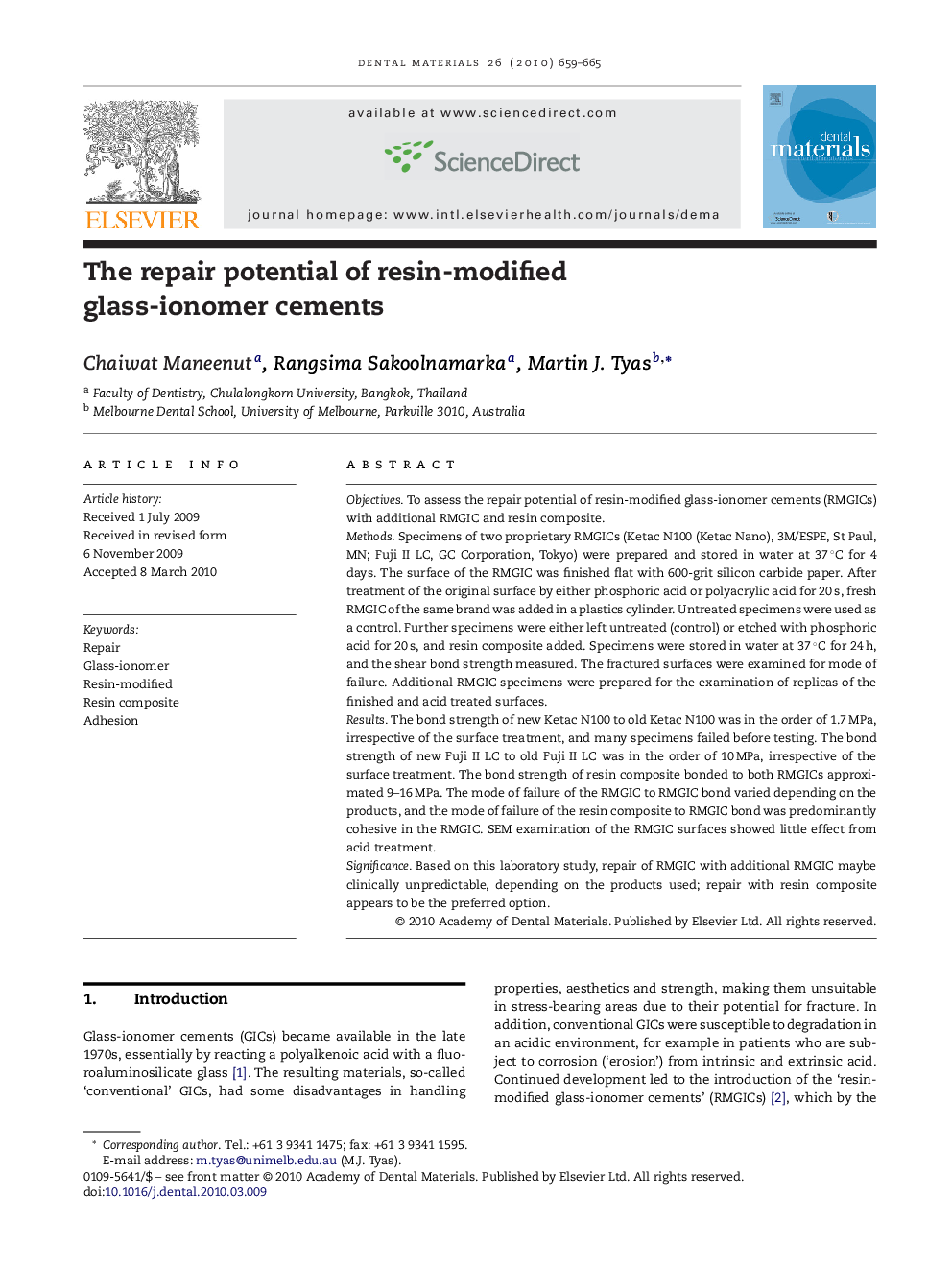| کد مقاله | کد نشریه | سال انتشار | مقاله انگلیسی | نسخه تمام متن |
|---|---|---|---|---|
| 1422721 | 986459 | 2010 | 7 صفحه PDF | دانلود رایگان |

ObjectivesTo assess the repair potential of resin-modified glass-ionomer cements (RMGICs) with additional RMGIC and resin composite.MethodsSpecimens of two proprietary RMGICs (Ketac N100 (Ketac Nano), 3M/ESPE, St Paul, MN; Fuji II LC, GC Corporation, Tokyo) were prepared and stored in water at 37 °C for 4 days. The surface of the RMGIC was finished flat with 600-grit silicon carbide paper. After treatment of the original surface by either phosphoric acid or polyacrylic acid for 20 s, fresh RMGIC of the same brand was added in a plastics cylinder. Untreated specimens were used as a control. Further specimens were either left untreated (control) or etched with phosphoric acid for 20 s, and resin composite added. Specimens were stored in water at 37 °C for 24 h, and the shear bond strength measured. The fractured surfaces were examined for mode of failure. Additional RMGIC specimens were prepared for the examination of replicas of the finished and acid treated surfaces.ResultsThe bond strength of new Ketac N100 to old Ketac N100 was in the order of 1.7 MPa, irrespective of the surface treatment, and many specimens failed before testing. The bond strength of new Fuji II LC to old Fuji II LC was in the order of 10 MPa, irrespective of the surface treatment. The bond strength of resin composite bonded to both RMGICs approximated 9–16 MPa. The mode of failure of the RMGIC to RMGIC bond varied depending on the products, and the mode of failure of the resin composite to RMGIC bond was predominantly cohesive in the RMGIC. SEM examination of the RMGIC surfaces showed little effect from acid treatment.SignificanceBased on this laboratory study, repair of RMGIC with additional RMGIC maybe clinically unpredictable, depending on the products used; repair with resin composite appears to be the preferred option.
Journal: Dental Materials - Volume 26, Issue 7, July 2010, Pages 659–665